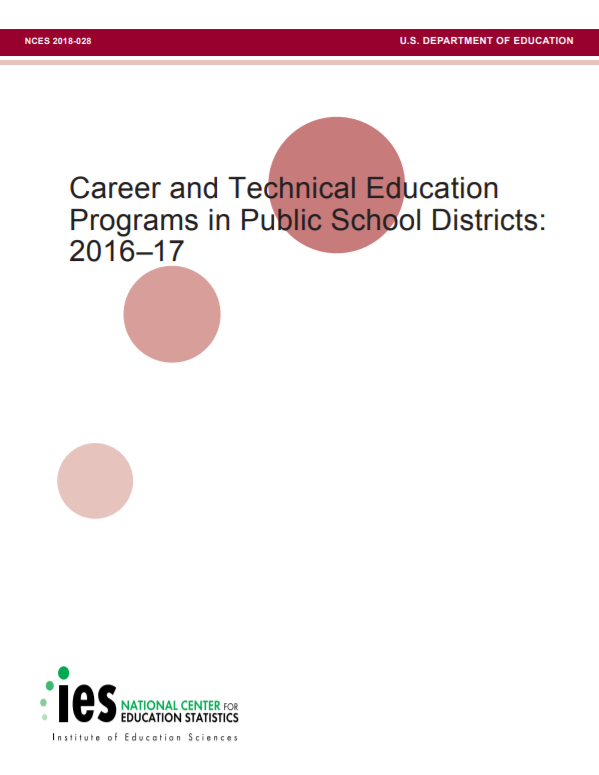Drawing on data from a national survey, this report from the National Center for Education Statistics provides nationally representative data on Career and Technical Education (CTE) programs. The report provides infromation about entities that provide CTE programs, locations of CTE programs for high school students, work-based learning actitivies and employer involvement, barriers to districts offering CTE programs, barriers to student particpiation in CTE programs, and the extent to which factors influence a district’s decision to add or phase out CTE programs. Major findings from the report include:
•During the 2016–17 school year, 98 percent of public school districts offered CTE programs to students at the high school level. Of the 98 percent:
•32 percent of districts reported that all of their CTE programs were structured as career pathways that align with related postsecondary programs, and an additional 33 percent reported that most of their programs were structured this way;
•Districts reported that the following were large or very large barriers to student participation in CTE programs offered by the district: lack of time in students’ schedules (25 percent of districts), students’ difficulty finding work-based learning (23 percent of districts), and transportation for work-based learning (20 percent of districts); and,
•Districts reported that the following work-based learning activities were included in one or more of the CTE programs they offered: on-the-job training, internships, practicums, clinical experiences or cooperative education (77 percent of districts); mentoring by local employers (65 percent of districts); student-run enterprises or services (55 percent of districts); apprenticeships or pre-apprenticeship programs (31 percent of districts); other work-based learning (16 percent of districts).
This report is a useful resource for policymakers and stakeholders seeking to understand the current lanscape of CTE programs to inform policy and decision-making.







